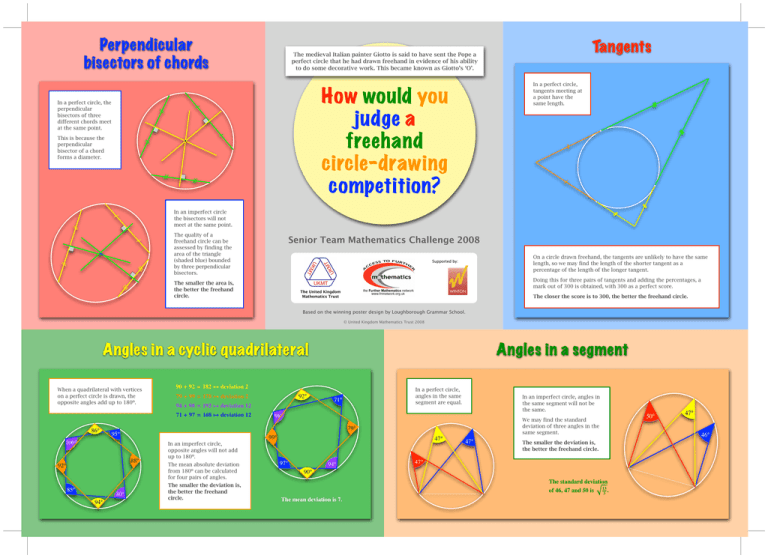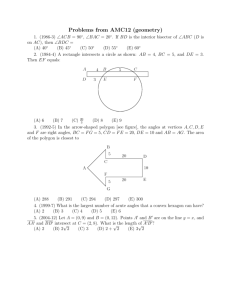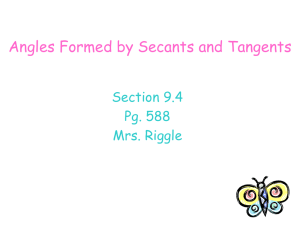Tangents
advertisement

Perpendicular bisectors of chords Tangents The medieval Italian painter Giotto is said to have sent the Pope a perfect circle that he had drawn freehand in evidence of his ability to do some decorative work. This became known as Giotto’s ‘O’. In a perfect circle, tangents meeting at a point have the same length. How would you judge a freehand circle-drawing competition? In a perfect circle, the perpendicular bisectors of three different chords meet at the same point. This is because the perpendicular bisector of a chord forms a diameter. In an imperfect circle the bisectors will not meet at the same point. The quality of a freehand circle can be assessed by finding the area of the triangle (shaded blue) bounded by three perpendicular bisectors. Senior Team Mathematics Challenge 2008 On a circle drawn freehand, the tangents are unlikely to have the same length, so we may find the length of the shorter tangent as a percentage of the length of the longer tangent. Supported by: Doing this for three pairs of tangents and adding the percentages, a mark out of 300 is obtained, with 300 as a perfect score. The smaller the area is, the better the freehand circle. The United Kingdom Mathematics Trust The closer the score is to 300, the better the freehand circle. Based on the winning poster design by Loughborough Grammar School. © United Kingdom Mathematics Trust 2008 Angles in a cyclic quadrilateral When a quadrilateral with vertices on a perfect circle is drawn, the opposite angles add up to 180º. 90 + 92 = 182 !→ deviation 2 79 + 99 = 178 !→ deviation 2 94 + 98 = 192 !→ deviation 12 71 + 97 = 168 !→ deviation 12 86° 100° 88° 85° 80° 94° In a perfect circle, angles in the same segment are equal. 71° In an imperfect circle, angles in the same segment will not be the same. 98° We may find the standard deviation of three angles in the same segment. 79° 95° 92° 92° Angles in a segment In an imperfect circle, opposite angles will not add up to 180º. The mean absolute deviation from 180º can be calculated for four pairs of angles. The smaller the deviation is, the better the freehand circle. 99° 47° 97° 94° 47° The smaller the deviation is, the better the freehand circle. 47° 90° The mean deviation is 7. The standard deviation ! of 46, 47 and 50 is 13 . 3 50° 47° 46°



